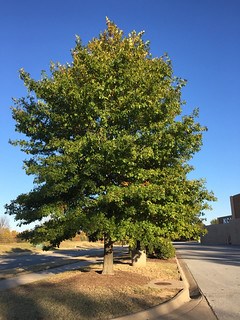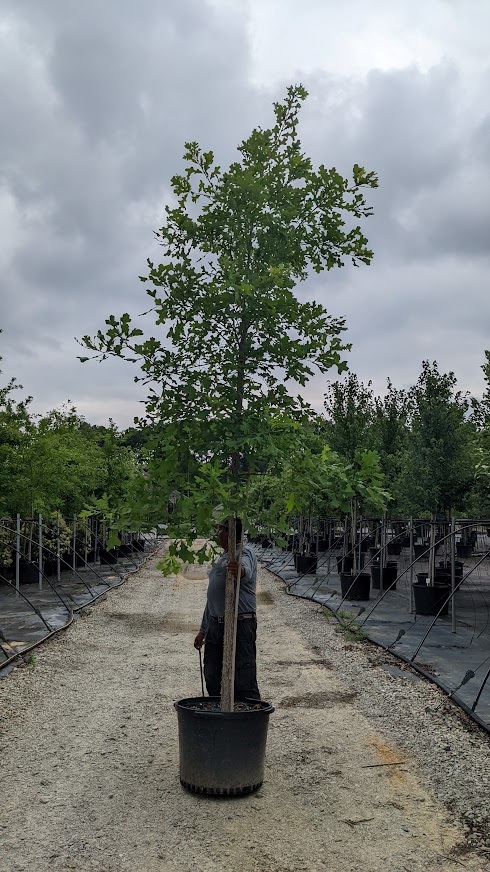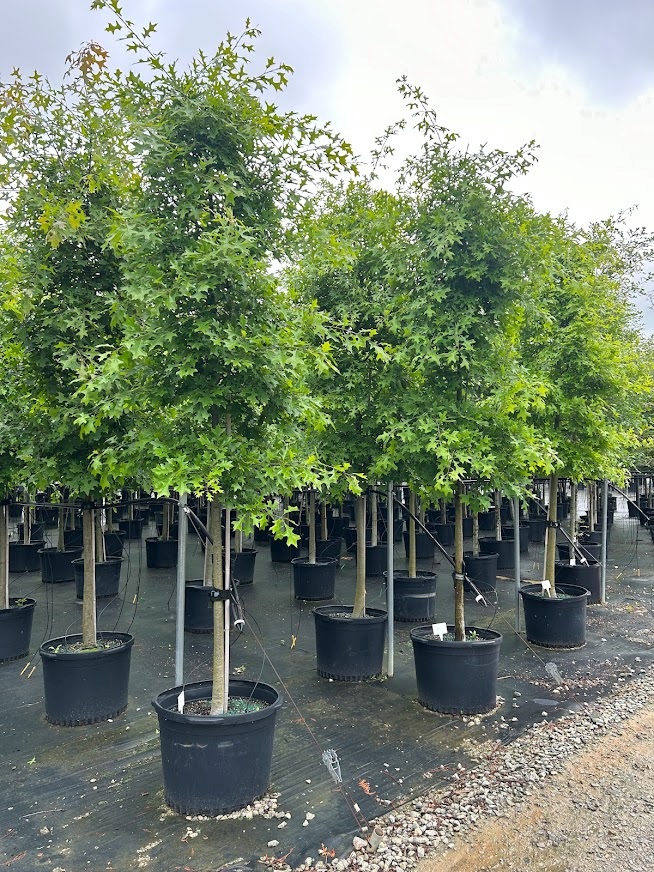919-552-8286
sales@adcocksnursery.com

*** LIMITED *** A handsome and sturdy deciduous tree, the White Oak is named for its whitish bark and grey twigs. White Oaks are large, long-lived, and slow-growing trees. They can reach heights of 60 to 150 feet, with diameters between 3 to 4 feet. Their glossy, bright green leaves have rounded lobes, five to seven per leaf.
Photo Credit: Buchanan's Native Plants and Panter Nursery

Grows 60-80' ht x 35-50' sp
Nuttal Oaks are large, beautiful shade trees that are very adaptable to many soil conditions. Native to wet, heavy, bottomland soils in floodplain forests along the gulf coasts and up the Mississippi River basin, it does well in low moist areas but is also drought tolerant once established. Does well as an urban street tree.
Rich, dark green foliage (similar to Pin Oak) turns to a vivid red-orange fall color with a clean fall leaf drop. Like most oaks, it is a keystone species, and is home to hundreds of animals, while being a host plants for several species of moths and butterflies.
Photo Credit: University of Arkansas Extension; NC State Extension

The Overcup Oak grows to a height of 45-70' and a spread of 35-50' at maturity.
The overcup oak tree is a long-lived, very sturdy shade tree that will thrive in a wide variety of soil conditions. Long overlooked by growers, the tree is gaining popularity and has been made more readily available for home landscapes. Because of its size, shape, adaptability, and hardiness, the overcup oak makes an excellent urban street tree.
Photo Credit: Arkansas Department of Agriculture and Buchanan's Native Plants

Grows to a height of 50'–70' and a spread of 40' - 60' at maturity.
Pin Oaks grow at a fast rate, sometimes more than 24" per year. The name Pin Oak comes from its short, tough branchlets located along the branches and limbs. Because of its tolerance for wet conditions, the tree is also known regionally as Swamp Oak, Water Oak, and Swamp Spanish Oak.
Its distinctive branching pattern sets it apart from other Oaks, with a single, central trunk, upright upper limbs, middle branches that are horizontal and lower limbs that glide gracefully toward the ground. Pin Oak does as well in heavy soils as it does in normal landscapes, plus it has great fall color, turning russet, bronze, and red.
Being a native keystone species means that Pin Oaks are both a grocery store and apartment complex for countless song, ground and water birds, butterflies, caterpillars, moths, pollinators and small mammals, all the while pushing back on deer, heat and pollution.
Photo Credit: Arbor Day Foundation and Charlotte Creek Nursery